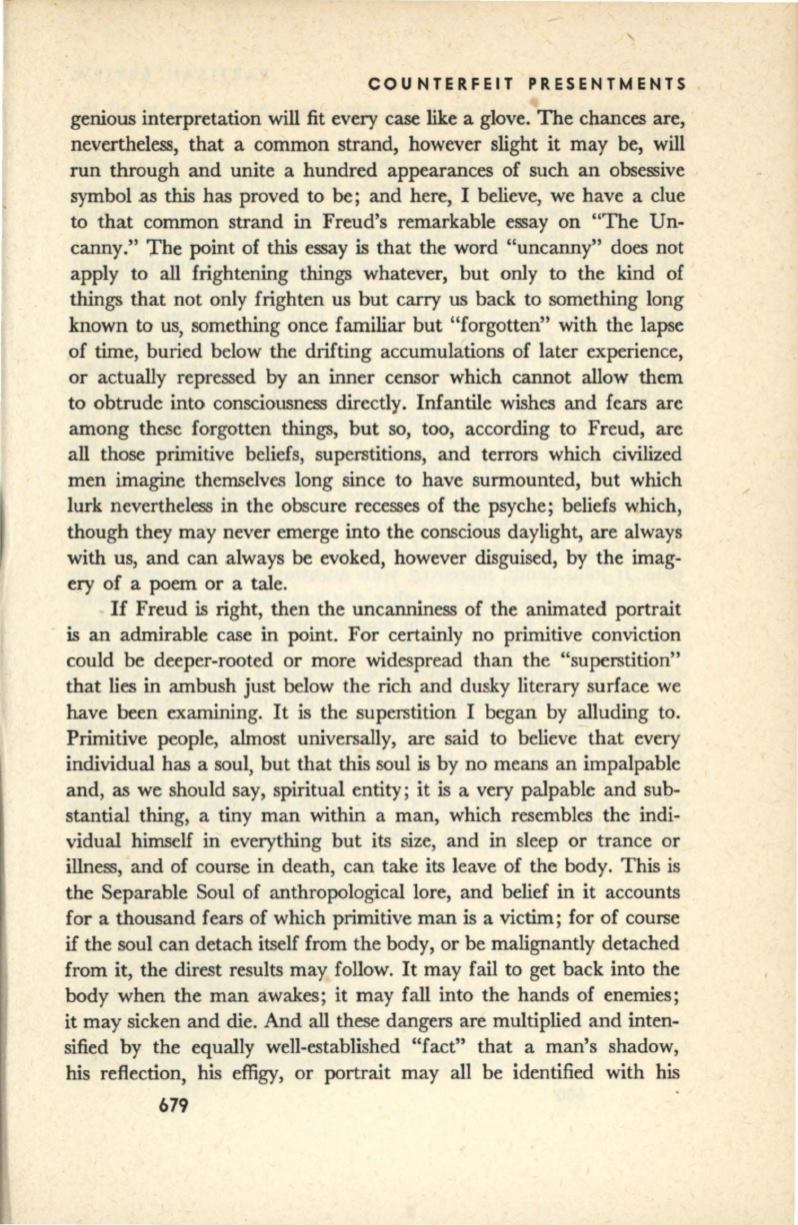
COUNTERFEIT PRESENTMENTS
genious interpretation will fit every case like a glove. The chances are,
nevertheless, that a common strand, however slight it may be, will
run through and unite a hundred appearances of such an obsessive
symbol
as
this has proved to be; and here, I believe, we have a clue
to that common strand in Freud's remarkable essay on "The Un–
canny." The point of this essay is that the word "uncanny" does not
apply to all frightening things whatever, but only to the kind of
things that not only frighten us but carry us back to something long
known to us, something once familiar but "forgotten" with the lapse
of time, buried below the drifting accumulations of later experience,
or actually repressed by an inner censor which cannot allow them
to obtrude into consciousness directly. Infantile wishes and fears are
among these forgotten things, but so, too, according to Freud, are
all those primitive beliefs, superstitions, and terrors which civilized
men imagine themselves long since
to
have surmounted, but which
lurk nevertheless in the obscure recesses of the psyche; beliefs which,
though they may never emerge into the conscious daylight, are always
with us, and can always be evoked, however disguised, by the imag–
ery of a poem or a tale.
If
Freud is right, then the uncanniness of the animated portrait
is an admirable case in point. For certainly no primitive conviction
could be deeper-rooted or more widespread than the "superstition"
that lies in ambush just below the rich and dusky literary surface we
have been examining. It is the superstition I began by alluding to.
Primitive people, almost universally, are said to believe that every
individual has a soul, but that this soul is by no means an impalpable
and, as we should say, spiritual entity; it is a very palpable and sub–
stantial thing, a tiny man within a man, which resembles the indi–
vidual himself in everything but its size, and in sleep or trance or
illness, and of course in death, can take its leave of the body. This is
the Separable Soul of anthropological lore, and belief in it accounts
for a thousand fears of which primitive man is a victim; for of course
if the soul can detach itself from the body, or be malignantly detached
from it, the direst results may follow. It may fail to get back into the
body when the man awakes; it may fall into the hands of enemies;
it may sicken and die. And all these dangers are multiplied and inten–
sified by the equally well-established "fact" that a man's shadow,
his reflection, his effigy, or portrait may all be identified with his
679


